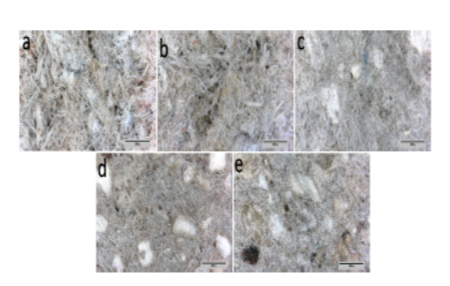


Indian Journal of Science and Technology
Year: 2022, Volume: 15, Issue: 19, Pages: 927-937
Original Article
Kushal G Ambli1*, B M Angadi2, Mohan B Vanarotti3
1Visvesvaraya Technological University, Belagavi, 590018, India
2BLDEA’s V. P. Dr. P. G. Halakatti College of Engineering and Technology, Vijayapur, India
3Sanjeevan Engineering and Technology Institute, 416201, Panhala, India
*Corresponding Author
Email: [email protected]
Received Date:10 January 2022, Accepted Date:27 March 2022, Published Date:25 May 2022
Objective: Current research is aimed to emphasize the use of bio-based composites in the form of thermal insulation, achieving complete degradability. Low density bio-composites have gained moderate importance as its development is in its primitive stage because of the processing and preparation issues. Methods: A preliminary investigation is carried out based on the results of the selected reinforcements Eggshell (ES), Groundnut Pod (GP), and Paper Cellulose (PC) with Tamarind Seed Gum (TSG) binder to justify the thermal behaviour in terms of thermal conductivity, thermal resistivity and diffusivity of various compositions; also conducted morphological characterization to justify molecular level bonding phenomenon. The fungal development on the composites is predominant and is addressed by use of additives, the additive samples are tested and analysed for change in properties. Findings: The preliminary experimental results motivated the use of PC reinforcement for further investigation. The samples of various compositions are synthesized for further testing. The average ‘k’ obtained from ES, GP, and PC based composites is 0.13, 0.083 & 0.052 W/mk respectively. The PC based composites depicted promising results in contrast with the commercially used insulation materials. Novelty: Considering the harmful effect of commercially used non-degradable insulation materials, an attempt is made in this research to synthesize a new completely biodegradable composite material for thermal insulation.
Keywords: Morphology; thermal properties; theoretical model; biocomposites; density
© 2022 Ambli et al. This is an open-access article distributed under the terms of the Creative Commons Attribution License, which permits unrestricted use, distribution, and reproduction in any medium, provided the original author and source are credited.
Published By Indian Society for Education and Environment (iSee)
Subscribe now for latest articles and news.